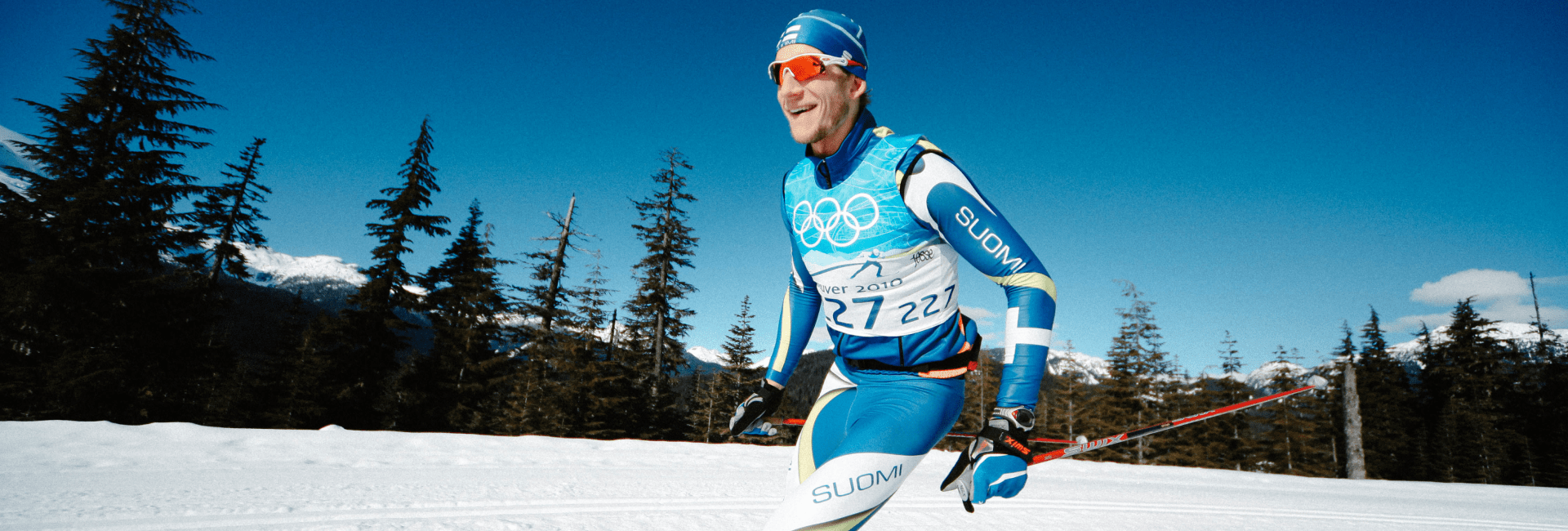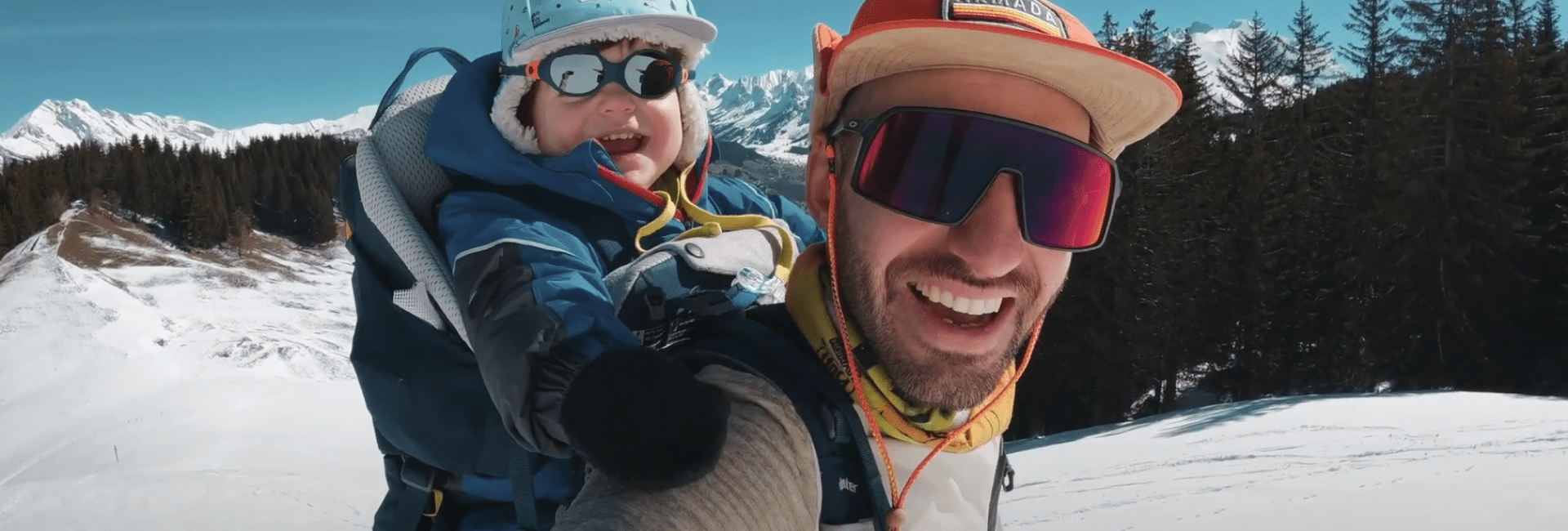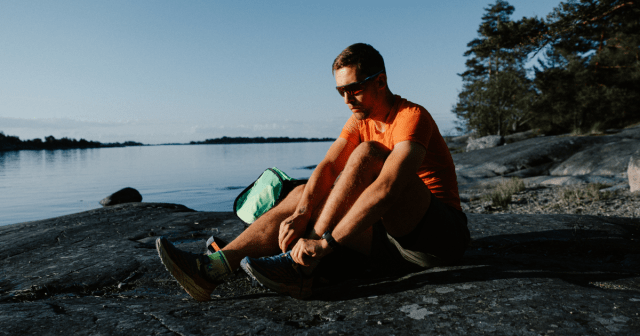Sometimes, seeing an athlete struggle will emotionally overwhelm sports photographer Jesse Väänänen. “When I was watching the end of the women’s marathon race, I started to cry because I saw their pain,” he recalls about the recent World Athletics Championships in Budapest. “I felt their pain. I felt bad for them while still really respecting and being in awe of what they’re doing.”
Tapping into the internal landscape of his subject and intuiting those critical seconds is what makes Väänänen’s work so moving. Scroll through the Instagram of the 39-year-old Finnish creative, and you’ll find hundreds of tiny but powerful athletic moments captured by his lens. The nail-biting tension and hope in a high-jumper’s face as they clear the horizontal bar. The raw tears of a middle-distance runner as they process the outcome of their much-anticipated race. The impossibly high-voltage smile that comes paired with a newly won medal.
Large-scale sporting events, the kind that captures the world’s attention, are filled with athletes on personal and professional journeys who are also participating in a landmark collective experience. It’s an overwhelming dynamic that Väänänen is no stranger to. “I still feel like an athlete,” reflects the former Olympian, who represented Finland at 2010’s Winter Games in Vancouver, Canada. “I can feel inside what [the athletes] are doing and what they are feeling.”
It’s a sensation that’s familiar to many. The reason why we’re so gripped watching elite athletes compete. Holding our breath as they round that last bend, take that jump, shoot that shot. Even those of us who haven’t trained at a professional level often feel and act like an athlete. We acquire discipline (and empathy) while striving to meet the physical goals we set for ourselves.
Sometimes I get panic attacks when I’m seeing somebody in high lactate and suffering. I’m not [the one experiencing it], but it’s still inside me. All those traumas.
In a similar sense, the 20 years Väänänen spent building a career as a cross-country skier is what enables his photography to make such an impact. He understands the years of dedicated training. The dreams that carry you through the difficult days and setbacks. The incremental progress toward qualifying for your goal. Yet, his ability to empathize with the athletes he captures isn’t always easy. “Sometimes I get panic attacks when I’m seeing somebody in high lactate and suffering,” says Väänänen. “I’m not [the one experiencing it], but it’s still inside me. All those traumas.”
Growing up in the southern city of Lahti, Finland, Väänänen didn’t exactly choose a life in sports. It chose him, in a sense. “I think my father chose it for me,” he laughs. In the 1980s, Väänänen’s father was a professional cross-country skier, retiring when his son was only three to become a technician for the Finnish national team. He hoped his son would develop a similar passion for the sport and coached his young son. “I had my first training diary when I was seven years old.”
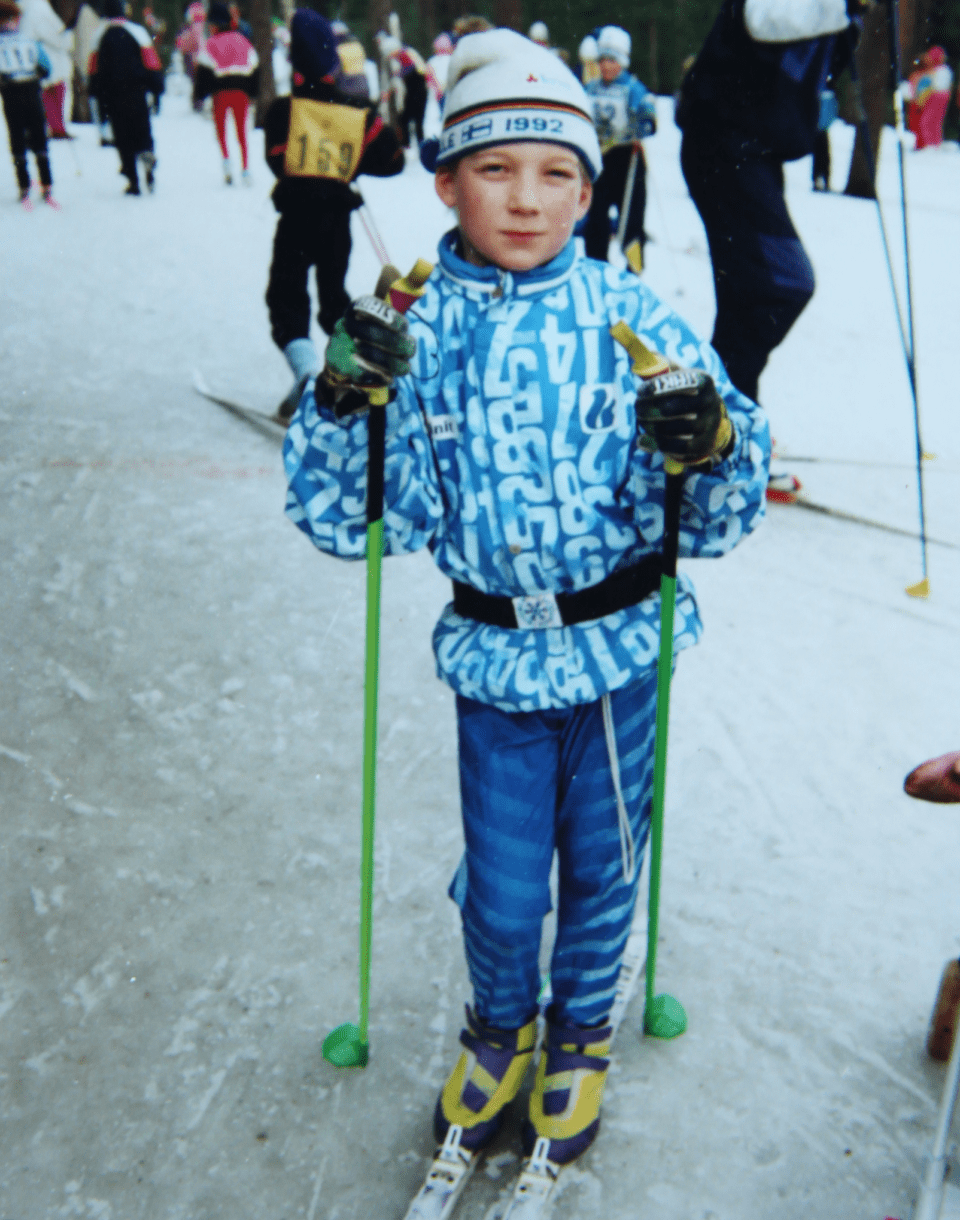
The loneliness of the long-distance skier
For the uninitiated, cross-country skiing is a solitary sport. While it has scenic perks (such as exploring snowy wilderness trails or seeing a sweeping vista across a frozen lake), you must also be prepared to spend a lot of time alone. For junior Väänänen, choosing a sport without a team to train with meant a lot of self-motivation. “Nobody can force you to go to the forest alone,” he notes. “You choose your support yourself.”
From a young age, his goals were clear. “If you can win against everybody in your age group, you know you might have a chance later when you’re becoming an adult and racing against everyone,” recalls Väänänen. “Since Finland is pretty good at cross-country skiing, you know that if you’re good in here, then you are probably pretty good worldwide.” But that also meant many others took the sport just as seriously, often with 150 kids in his age group competing against him in the Finnish nationals.
Growing up wasn’t without its challenges, too. At age 12, Väänänen damaged three vertebrae in his spine during a snowboarding accident, which took months to heal. Then there was the issue of his height. “At first, when you’re growing fast, and you’re really tall, you’re a bit clumsy. But now I’m two meters in height, which is too much for a cross-country skier because it means you are heavier than anyone else,” he observes. “Since it’s an outdoor sport, all the kilograms that you have to carry to the top of the hill are unnecessary weight in a way. In longer distances, if you are 20 kilos more than the competitors, you are the underdog.”
You must create an illusion that your training is more important than anything else. I guess I created this in my head pretty early on.
Still, Väänänen didn’t let this stop him from pursuing his dream, and he found the motivation to act as an athlete came naturally. “I’ve always liked to be alone in the forest. I don’t remember that there were difficulties in terms of discipline. In individual sports, you have a coach, but he’s not running or skiing next to you all the time. You’re your own boss, most of the time.” The key to achieving this was all about mindset for the junior skier. “You must create an illusion that your training is more important than anything else. I guess I created this in my head pretty early on.”
As Väänänen grew, prioritizing sport over everything else was sometimes at odds with the average teenager’s life. “New Year’s Eve is a really good example,” he recalls. “For a cross-country skier, there’s always a race on January 1st, but there’s also New Year’s Eve on December 31st. It’s one of those times when you know your friends are having fun somewhere, and you’re getting to bed early, ready for the race the next day.”
Such sacrifices paid off, with Väänänen representing Finland in the Scandinavian Championships against Sweden and Estonia when he was only 17. “I got to go there, and then I knew that I might have a chance in this sport internationally, especially at the Junior World Championships,” where the best skiers aged 16-20 compete. After that, it was onto the Alpine Ski World Cup, which Väänänen remembers as an eye-opening experience. “You actually get to race against those guys that you’ve been watching on TV, but the youngest students rarely do well in their first World Cups.”
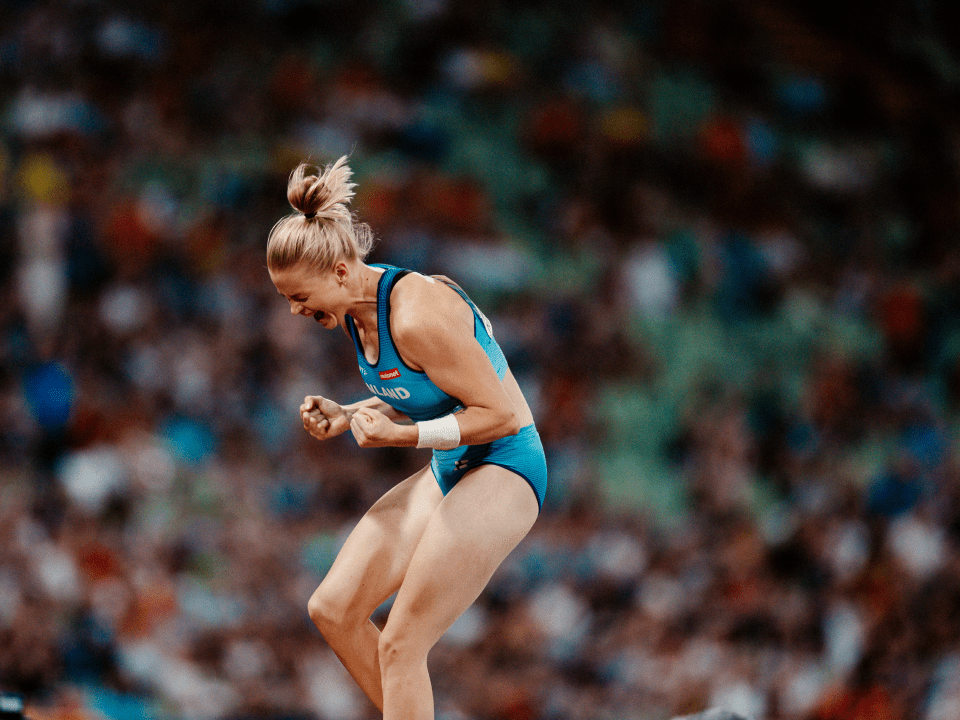
Becoming an elite athlete
The breakthrough came for the athlete in 2007 when a coach from the national team offered the 23-year-old some advice. “Double polling is when you push with both hands simultaneously and don’t use your legs,” Väänänen explains. “We were doing this really specific technique, training in steep uphill where you only have to really slowly push. [The coach] stopped me on the uphill and said, “Don’t use your abs like that. Try to use your lower body a bit differently.”
That wisdom dramatically changed how Väänänen skied. “I started to think about it differently. And since I’m so tall, it changed something in the way that I do double polling.” The result instantly showed in his competitive performance. “The first World Cup after that training season, I was 10th in the first race. That was a really big leap for me after being 55th or 60th in the previous season’s races.” Väänänen’s performance steadily grew in the following years, ultimately qualifying him for his dream.
So when I went to the Olympics, I was like, “Holy ****! I could actually take a medal here.”
“It was really clear to me from an early age, around seven, that I want to be a cross-country skier, and I want to be an Olympic champion someday,” he reflects wryly. “But that never happened.” In his last World Cup race before heading to the 2010 Winter Olympics in Vancouver, Väänänen came fourth, which felt like a sign of what was to come. “I knew that I could have won the race or at least fought for the victory if I had made the small tactical decision differently,” he notes. “So when I went to the Olympics, I was like, “Holy ****! I could actually take a medal here.”
Knowing what it was like to finally arrive at that gut-wrenching, make-or-break moment is what makes Väänänen’s work these days so emotive. With his lens, he takes us there, to those seconds when an athlete is powered by the same heady mix of nerves and excitement. As they ready themself on the starting block. As they build towards a jump. It’s through his photos that we’re able to understand that for an athlete, the hurdles are not simply physical but mental as well.
You have to have these pictures in your head that are pushing you forward and making it possible to motivate yourself. So those images are the ones that give you the pressure because you have been having those dreams in your head for so long.
Väänänen acknowledges that the biggest obstacle he had to overcome back there in Vancouver was the pressure he naturally put on himself. “You’ve been painting this picture in your head for 20 years about what you would do when you cross the finish line as the Olympic champion,” recalls Väänänen. “It’s what you need when you’re roller skiing in the heavy rain in October. You have to have these pictures in your head that are pushing you forward and making it possible to motivate yourself. So those images are the ones that give you the pressure because you have been having those dreams in your head for so long.”
Arriving in Vancouver ten days before the Winter Olympics, Väänänen’s coach advised him to be relaxed about his final preparations. “I remember him saying, “You take it easy. Don’t do any intense exercises anymore. You don’t have to push it too hard. You have what it takes.” But I still tried to take it up a notch. I guess I was a bit too excited, but it was a mistake.” In the men’s sprint for cross-country skiing, Väänänen placed 22nd at 3:39.21, a mere 4.64 seconds slower than the Russian winner.
Still, these days, he has a great perspective on the experience, finding peace with the result. “Even if I had done everything perfectly within the last two weeks, I think I would have been in the top eight maximum. So, no medals for me,” observes Väänänen. “In that sense, I’m happy with the decisions that I made because it wouldn’t have made a big difference to be 8th in the Olympics or 22nd. It doesn’t matter.”
It’s way easier to live the rest of your life when you know you’ve had the shot. You got to try.
What is most significant is that he got the chance. “One of the goals of my whole career was to make it to that level that when I’m 80 years old and in my rocking chair, I don’t have to tell people, “I could have been that good if I had the chance. I would have done that that.” For Väänänen, this mindset fills him with peace. “It’s way easier to live the rest of your life when you know you’ve had the shot. You got to try.”
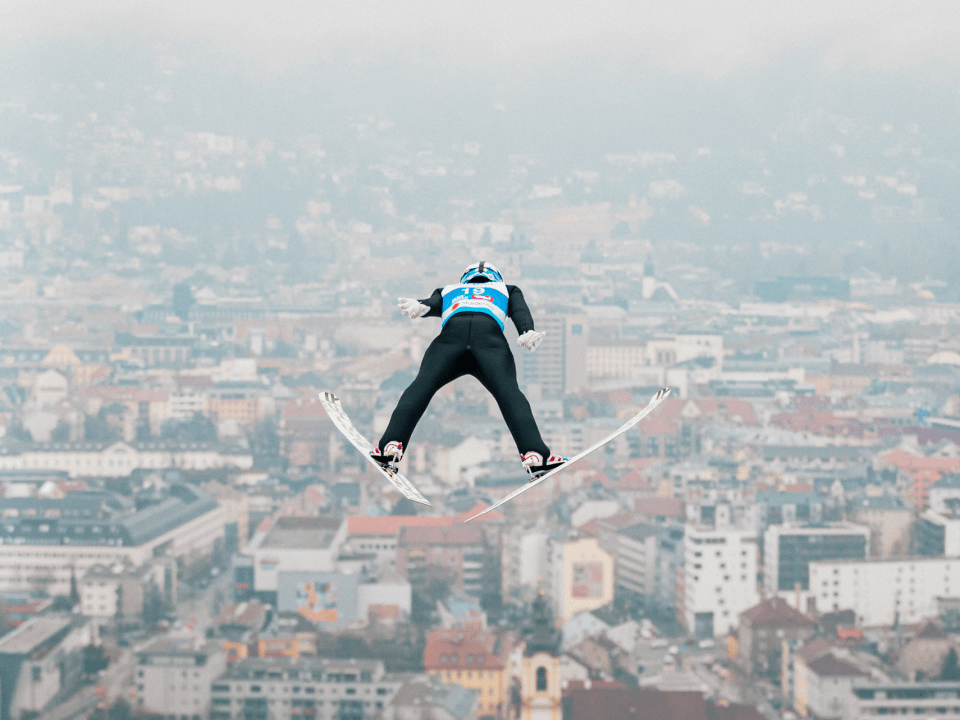
On Capturing the Agony and the Ecstacy of Athletic Life
Growing up as an athlete, he never had a plan B. However, Väänänen used drawing and painting as a release from the physical intensity of his training. “It was a way for me to escape from my head and my body and relax for seven hours in a row.” At 19, he bought his first digital camera and was surprised to discover that his creative outlet meant he naturally had a knack for taking photos. People were soon offering to pay for his images.
Retiring from professional athletics two years after the Olympics, Väänänen deliberately took a step aside from the sports industry for a few years to help his mental state, citing grumpiness as being an issue. “But then gradually I noticed that maybe there is something to the emotions and everything that sport gives you,” he recalls. “So, in recent years, I’ve become involved in sports in my own way.” Combining his passion for photography and videography with the world of athletics, Väänänen co-founded the creative agency Snou in 2017.
To be an entrepreneur is very similar to being an individual athlete… many times, it’s up to you and what you’re ready to do. What you’re willing to do. What your vision is.
From the behind-the-scenes videos of him and his team barrelling down ski slopes with cameras, you can tell Väänänen still enjoys making sport a big focus in his career. And his experience continues to inform the work he does in some surprising ways. “To be an entrepreneur is very similar to being an individual athlete,” he observes when reflecting on how the discipline of his sporting mindset helps run a company. “Of course, you have to have your employees and your team on the same page, and they are doing great stuff. But still, many times, it’s up to you and what you’re ready to do. What you’re willing to do. What your vision is.”
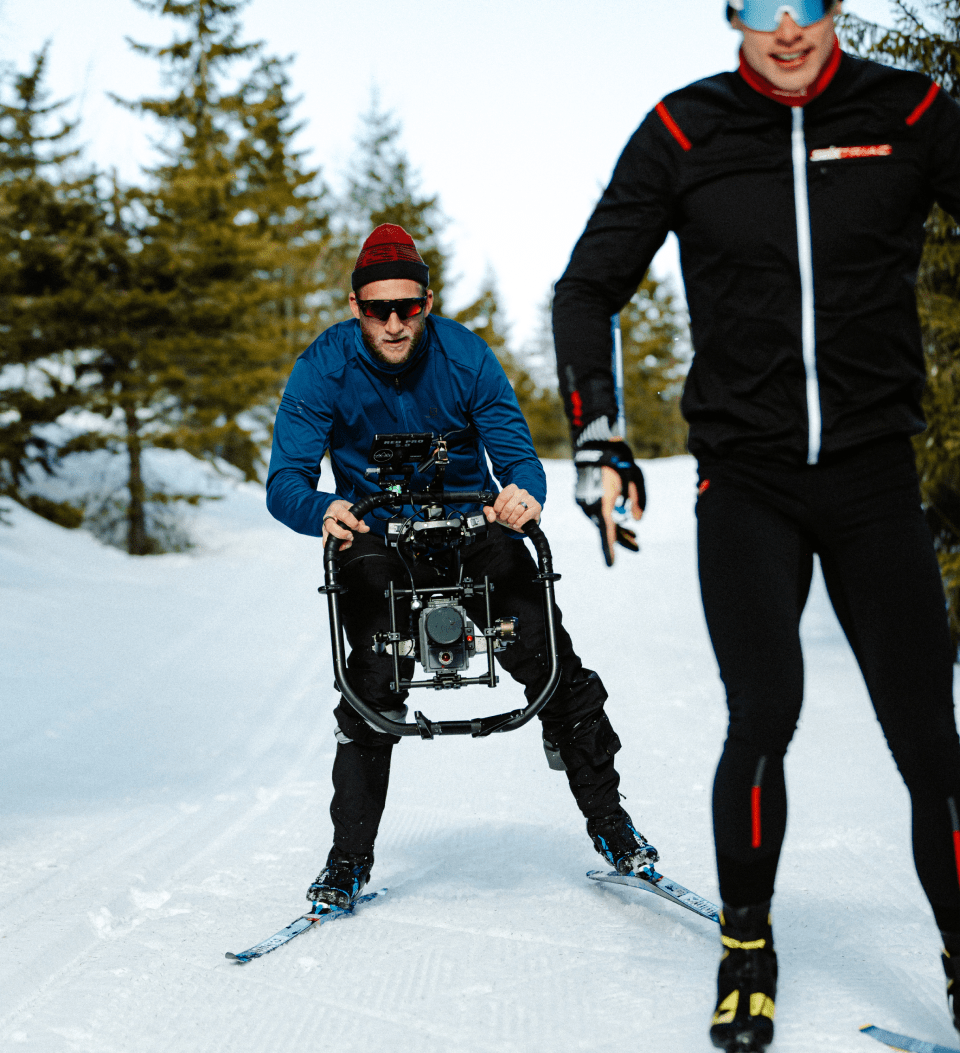
If you liked this post, don’t forget to share so that others can find it, too.
Or give it a thumbs up!
I like this article
Please note that the information provided in the Polar Blog articles cannot replace individual advice from health professionals. Please consult your physician before starting a new fitness program.
